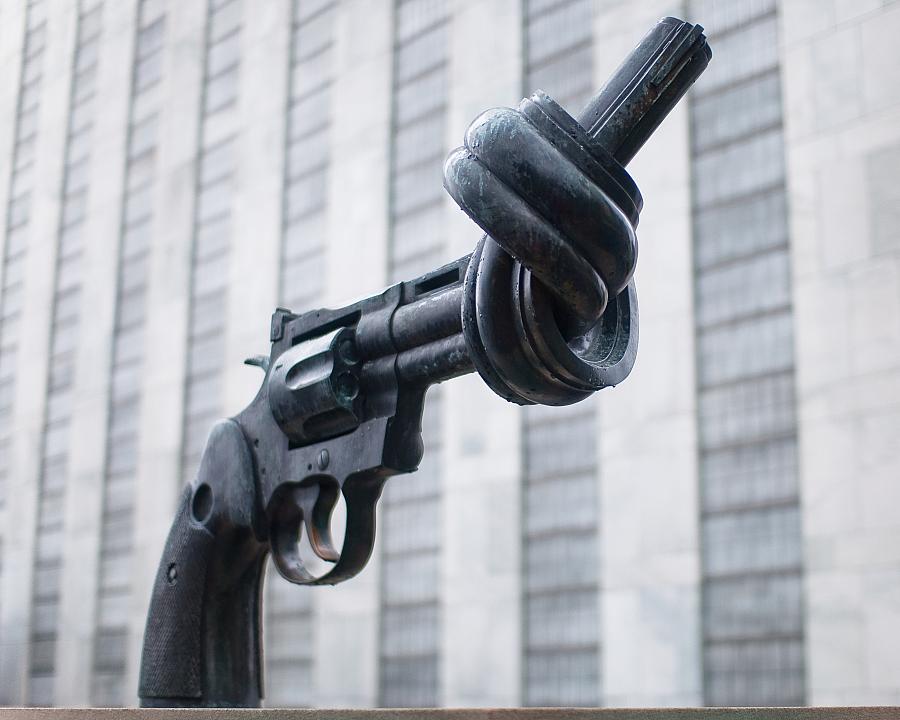Should we focus more on the ER to curb youth gun violence?

It won’t surprise many to learn that teens and young adults who go to the ER after an assault are more likely to be involved in gun violence in the months and years that follow. It makes intuitive sense that assaults are flashpoints in ongoing cycles of violence.
But now researchers have published data that help quantify the trend. In a longitudinal study published in Pediatrics, investigators found that teens and young adults who were in the ER for an assault injury were 40 percent more likely to report gun violence over the following two years. Those elevated odds lead researchers to suggest that an assault-related visit to the ER should serve as a “teachable moment to intervene and address their underlying risk for future firearm violence.”
The new data come from the Flint Youth Injury Study, which followed two groups of 14- to 24-year olds for two years following their visits to an ER in Flint, Michigan. The first group consisted of youth who were seeking care for an assault and had used drugs in the past six months. The comparison group consisted of youth who were using drugs, but were seeking care for reasons other than assault.
During the two years that researchers followed them, 59 percent of the assaulted youth said they experienced gun violence, compared with nearly 43 percent in the control group — a nearly 40 percent difference. Much of that gun violence came within six months of the ER visit. And the risk of gun violence went up if the subjects were male, African American, assaulted, or had attitudes of retaliation, PTSD or drug addiction. The study’s authors write:
Our results highlight that an emergency department assault-injury visit is an important indicator of future firearm violence risk and emphasize the substantial need for evidence-based interventions addressing this risk.
One reason the trip to the ER is such a critical moment is that for many assault victims and perpetrators, the episode isn’t finished. “In fact, among our baseline sample, almost half of those seeking assault care did not feel the altercation was over, and almost a quarter indicated that they, or their friends or family would likely retaliate,” the researchers write.
One exemplary approach to using an ER visit to interrupt the cycle of violence has been pioneered by Dr. Ted Corbin and his team with the Center for Nonviolence and Social Justice in Philadelphia. His Healing Hurt People program provides follow-up services to young assault victims that address the issues that often lead to retaliation. “Those wounds are deeper than flesh itself, so we're trying to get more than just medicine involved,” Corbin told our 2010 National Health Journalism Fellows.
These ongoing cycles of violence begetting violence have made gun homicides the leading cause of death among African American youth, and the second leading cause of death among youth overall. It’s also a problem with distinctly American proportions: The gun homicide rate for U.S. youths is nearly 43 times higher than in 22 other similar OECD (Organisation for Economic Co-operation and Development) member countries (mostly developed nations).
While the ER may be an underutilized opportunity in efforts to halt the deadly spiral of assault and revenge, social scientists and criminologists have been experimenting more broadly with new evidence-based approaches to stem urban violence. The New York Times’ Tina Rosenberg highlighted some of these emerging programs in her “Fixes” column earlier this year.
As Rosenberg points out, rigorous research — especially randomized control trials — is lacking on interventions aimed at curbing violence. But the Crime Lab at the University of Chicago, founded in 2008, is leading the scientific charge and has found some early promise in approaches that use cognitive behavioral therapy among at-risk youth in Chicago. Such therapies can help people regulate the impulse to lash out and retaliate immediately, an urge that perpetuates urban cycles of violence. As Crime Lab co-founder and University of Chicago professor Harold Pollack told Rosenberg, “A couple of young guys plus a stupid beef plus the presence of a gun equals dead bodies.”
Behavioral therapy is used in “Becoming A Man,” a Chicago program studied by Crime Lab. Researchers found that violent crime went down and school performance went up significantly among participating youth — albeit temporarily. (The program recently benefited from a $10 million boost from President Obama’s My Brother’s Keeper program.) Another program using behavioral therapy among youth in a Chicago detention center showed modest but longer-lasting gains in preventing returns to detention.
Research into such programs is ongoing. Last year, the Crime Lab partnered with New York City to launch Crime Lab New York, which will work with policymakers to study and implement science-based approaches there.
But what can we do once shots have already been fired? It’s not hard to imagine the trauma and emotion saturating a gun assault. Can teens and young men who end up in the ER for gunshot wounds actually be intercepted and redirected into cognitive behavioral therapy or conflict resolution programs? Skepticism here seems natural.
But as the new data suggest, if you want to anticipate future gun violence before it happens, the ER offers a high-probability set of leads.
Photo by sari_dennise via Flickr.

